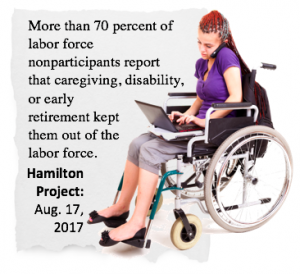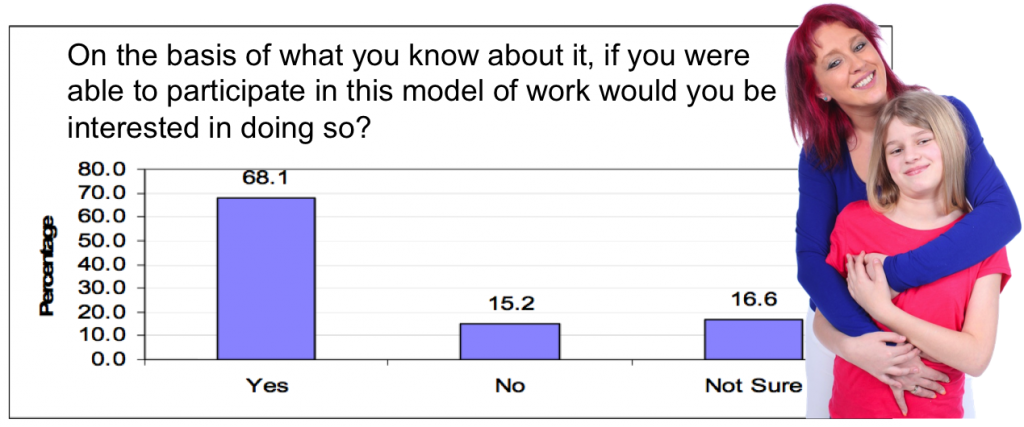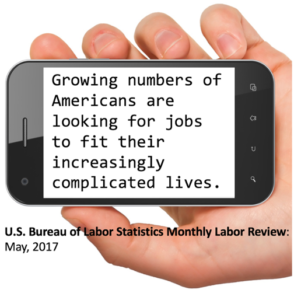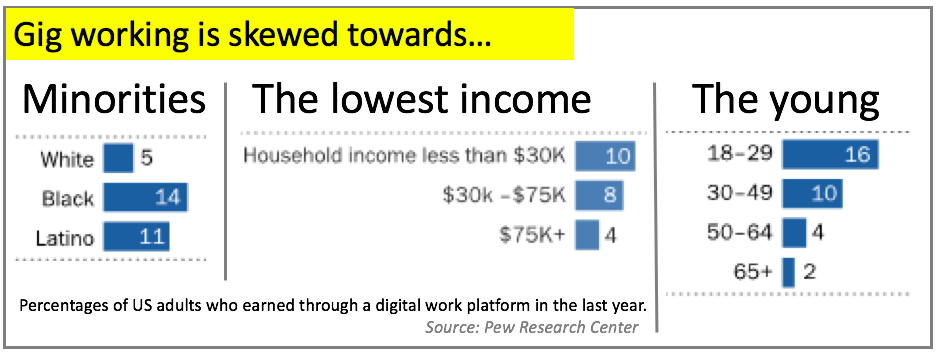Irregular workers are diverse, but in three broad cohorts. They skew to women, minorities, the young and lowest-skilled..
.
What are the demographics?
Irregularity disproportionately impacts people already struggling in labor markets:
In 2016, 45% of gig workers needed control over their schedule, only 25% were gigging because they couldn’t get regular hours. That suggests a high proportion of women working around family commitments. That’s likely shot up as congregant childcare becomes so uncertain.
How to meaningfully segment this huge pool of workers? We use the reason they are working uncertain hours (rather than being unemployed or in a traditional job):
.
COHORT 1: Core Irregulars
Some people can’t do regular hours even if a job was offered. If you have care-giving commitments, complex parenting needs, a fluctuating medical condition or a need to earn around changeable learning commitments you may struggle to commit to regular work hours. Each morning you could be asking: “Could I work today? I won’t know until lunchtime”.
 Availability might depend on personal issues such as; friends’ willingness to babysit, PTSD that comes and goes, whether elderly parents will be well enough for the day center or if a course module was finished. Tutors, consultants, accountants and other professionals can often fit work around these haphazard obligations. But working from home is not possible for those qualified for shop, warehouse, or hospitality tasks.
Availability might depend on personal issues such as; friends’ willingness to babysit, PTSD that comes and goes, whether elderly parents will be well enough for the day center or if a course module was finished. Tutors, consultants, accountants and other professionals can often fit work around these haphazard obligations. But working from home is not possible for those qualified for shop, warehouse, or hospitality tasks.
Through no fault of their own, these people are often marginalised by services focused on job-creation. But about 20% of the workforce can only work ad-hoc around unpredictable issues in their life..
.
COHORT 2: Forced Irregulars
 .Many irregular workers would rather have predictable hours. This group has two parts:
.Many irregular workers would rather have predictable hours. This group has two parts:
 Partially employed: Ten years ago staff in stores, hotels, warehouses, restaurants, contact centers, and other businesses typically had recurring hours. Now they are more likely to be scheduled exactly in line with their employer’s hour-by-hour needs.
Partially employed: Ten years ago staff in stores, hotels, warehouses, restaurants, contact centers, and other businesses typically had recurring hours. Now they are more likely to be scheduled exactly in line with their employer’s hour-by-hour needs.
If not called in today, they likely need top-up hours elsewhere. But they have to keep themselves available tomorrow in case the employer needs them. If they don’t, those shifts could dry up.
Someone who shows in the statistics as having a W-2 job may, in reality, just be doing gig work for one company. This precariousness is increasing post-virus. Companies are uncertain, saving every dollar.
- Unemployed: Many lost their jobs forever in the pandemic. They are scrabbling for any odd bits of work they can find.
.
COHORT 3: Voluntary Irregulars
It’s easy to assume ad hoc work will inevitably be destabilizing, belittling, and devoid of career progression. But it’s a deliberately dismal view. At it’s best, working on your own terms for a portfolio of organizations or individuals can deliver networks, opportunities, and a skills mix unthinkable for those who hitch themselves to one institution. Some people prefer it.
 A 2007 independent survey for Britain’s government took a weighted sample of 1,000 Londoners who could do irregular blue-collar work. In interviews they were introduced to a world where they set their daily hours and terms on which they would work. Then they were booked for all sorts of work. The need for reliability was explained. This is a key attribute of a lower-skilled irregular worker: do they do what they say they will?
A 2007 independent survey for Britain’s government took a weighted sample of 1,000 Londoners who could do irregular blue-collar work. In interviews they were introduced to a world where they set their daily hours and terms on which they would work. Then they were booked for all sorts of work. The need for reliability was explained. This is a key attribute of a lower-skilled irregular worker: do they do what they say they will?
Traditional thinking says this group would want the security, predictability and possibilities for promotion of being an employee for a very flexible organization. For 68% that wasn’t the case. This research suggests a sizeable section of any labor market want the opportunity to manage their work their way. They will accept the need to perform reliably in return.

About 10% of workers seem to believe they can improve life chances by doing their own thing outside a single employee relationship.


